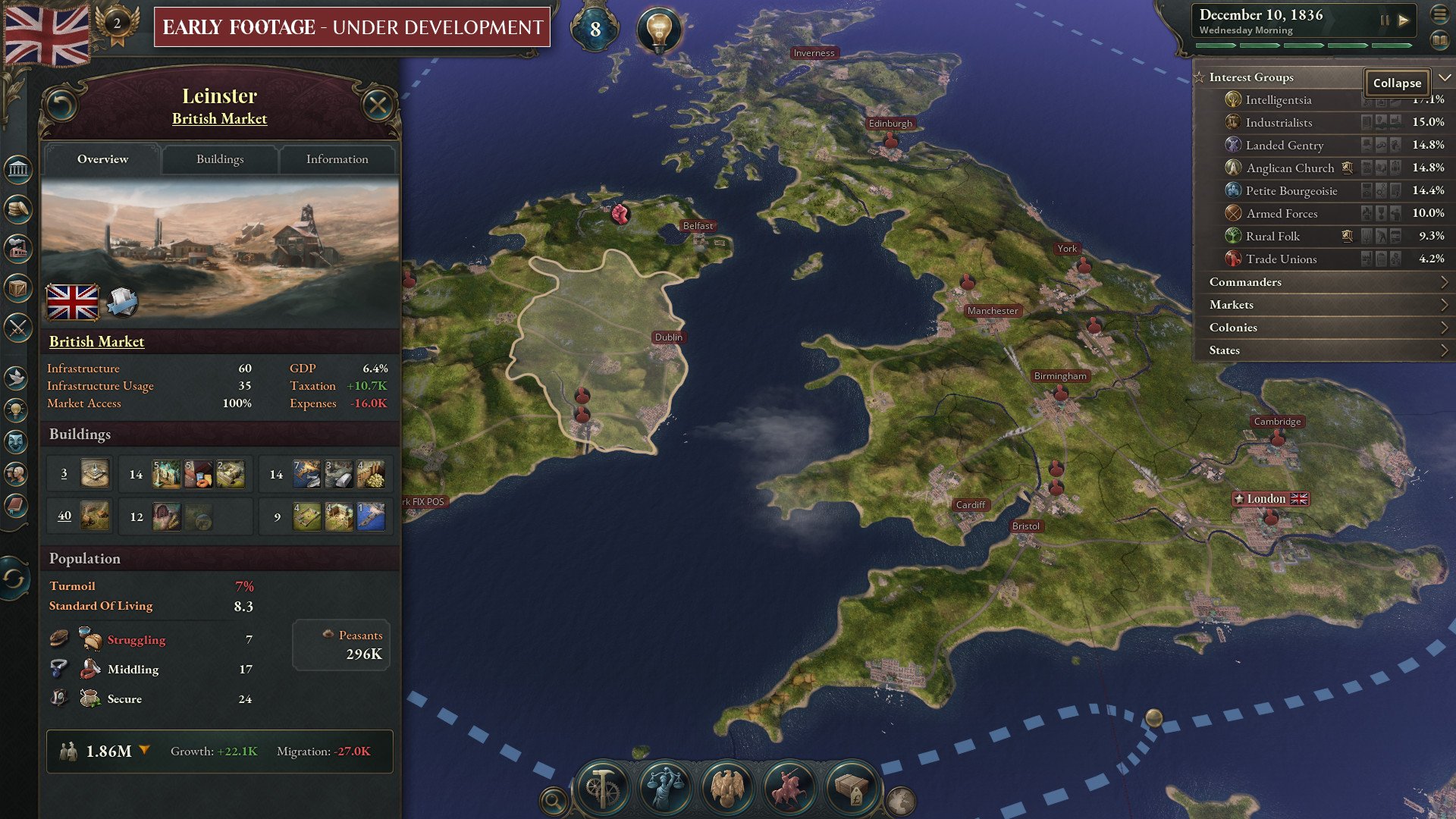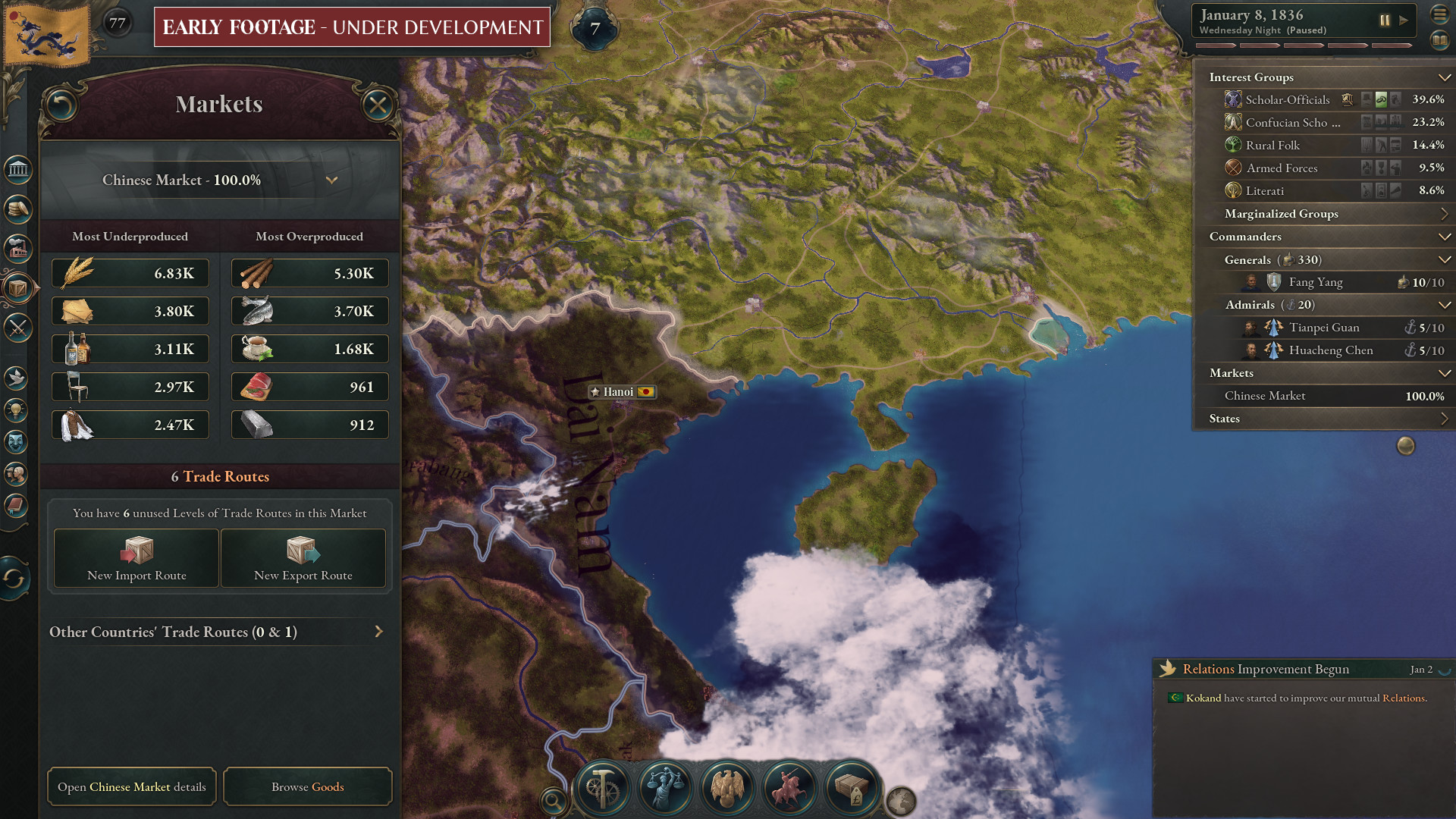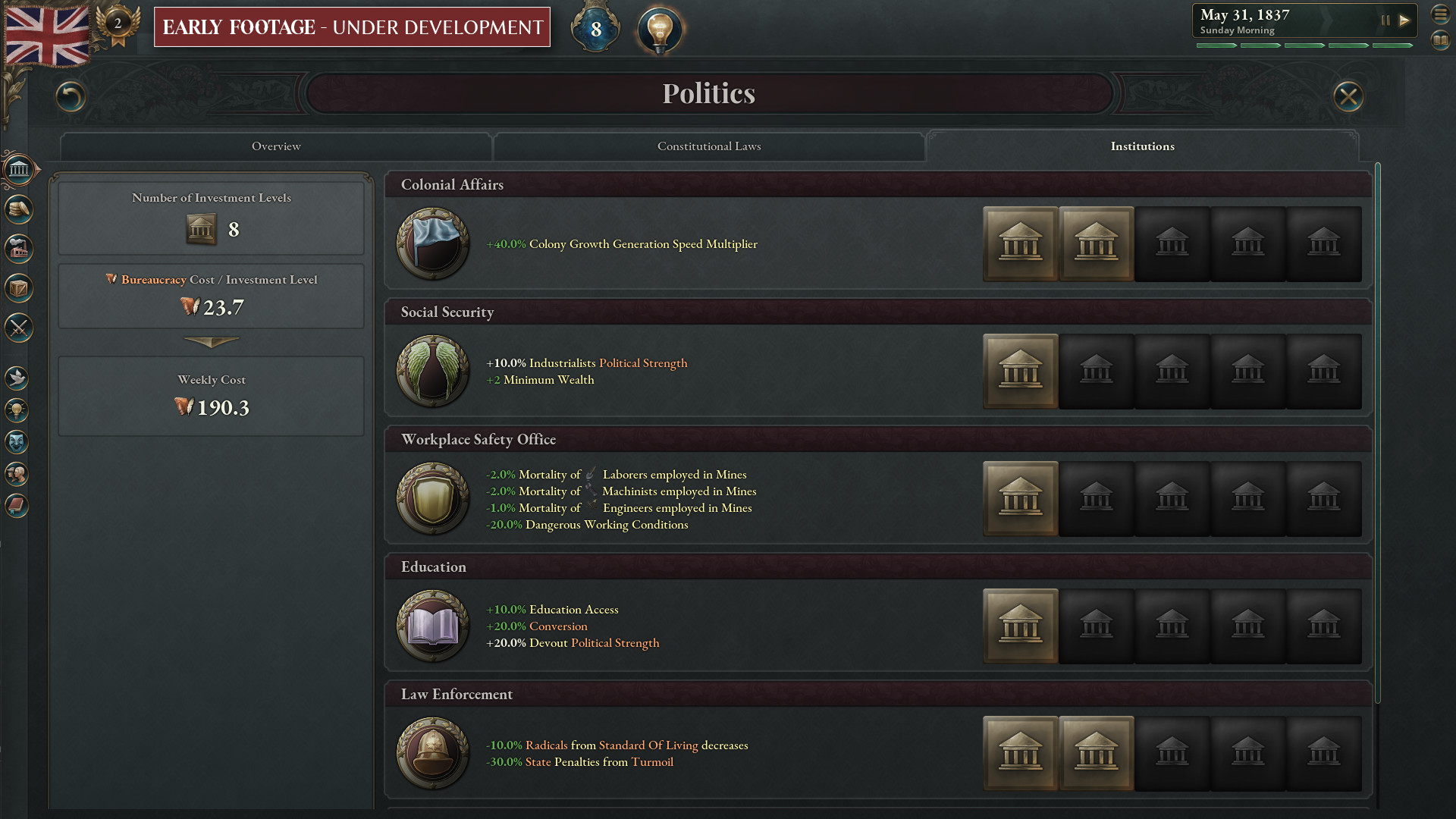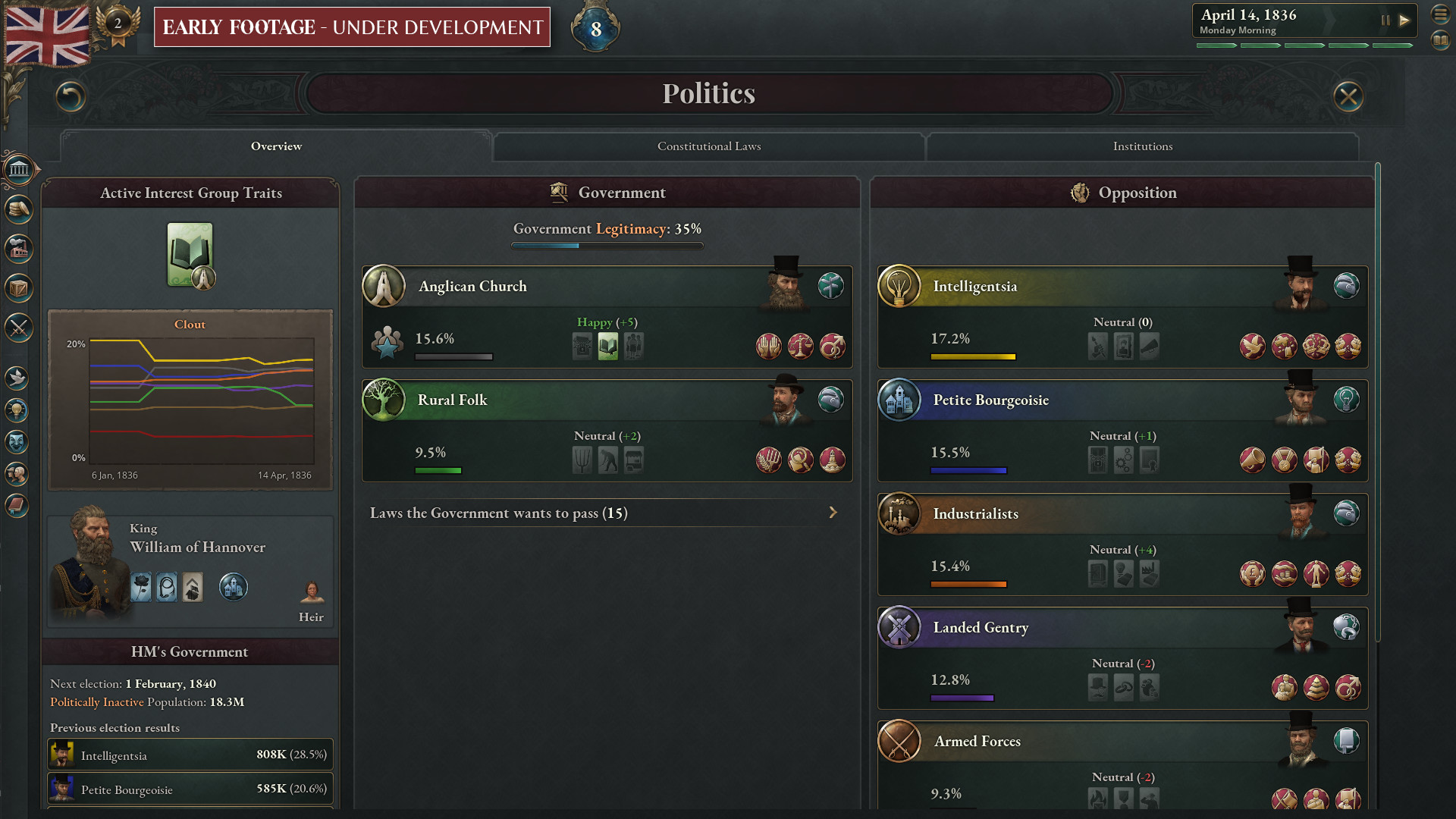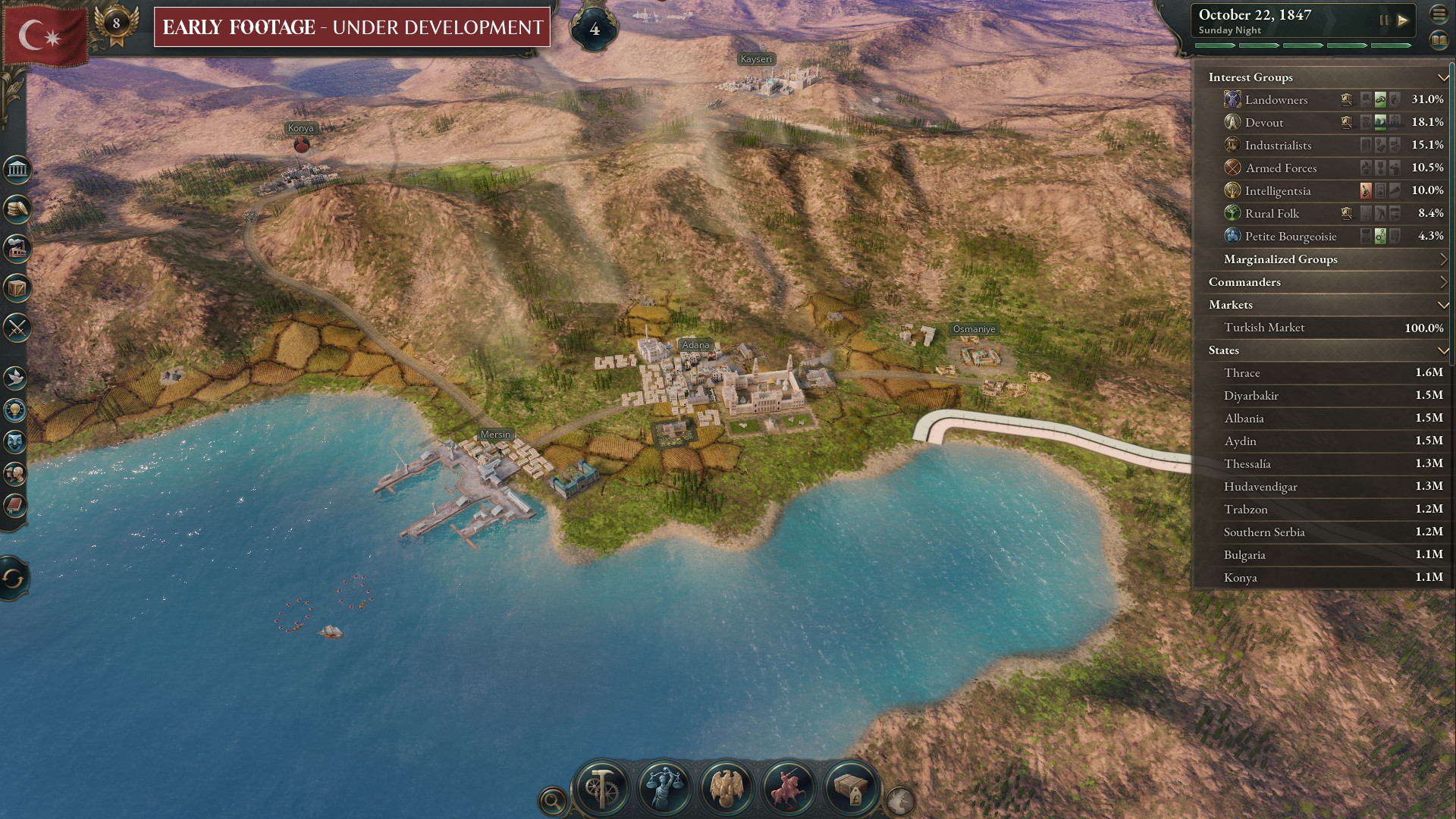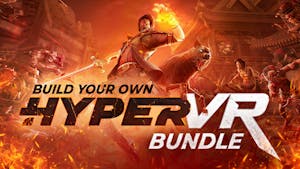SHAPE A GRAND TOMORROW
Paradox Development Studio invites you to build your ideal society in the tumult of the exciting and transformative 19th century. Balance the competing interests in your society and earn your place in the sun in Victoria 3, one of the most anticipated games in Paradox’s history.THE ULTIMATE SOCIETY SIMULATOR
- Lead dozens of world nations from 1836-1936. Agrarian or Industrial, Traditional or Radical, Peaceful or Expansionist... the choice is yours.
- Detailed population groups with their own economic needs and political desires.
- Reform your government and constitution to take advantage of new social innovations, or preserve the stability of your nation by holding fast to tradition in the face of revolutionaries.
- Research transformative new technology or ideas to improve your national situation.
DEEP ECONOMIC SYSTEM
- Expand your industry to take advantage of lucrative goods, taxing the profits to improve national prosperity.
- Import cheap raw materials to cover your basic needs while finding new markets for your finished goods.
- Secure vital goods to fuel your advanced economy and control the fate of empires.
- Balance employing available labor force with the needs for new types of workers.
PLAY ON A GRAND STAGE
- Use your diplomatic wiles to weave a tangled global web of pacts, relations, alliances, and rivalries to secure your diplomatic position on the world stage.
- Employ threats, military prowess and bluffs to persuade enemies to back down in conflicts.
- Increase your economic and military strength at the expense of rivals.
- Accumulate prestige and the respect of your rivals as you build an industrial giant at home or an empire abroad.
Hello and welcome to another Victoria 3 development diary. Today is going to be a slightly different diary, as instead of bringing up a system we havent previously covered well be talking about a whole bunch of changes that have happened to Trade, which was previously talked about in Dev Diary #38 .
As is fairly common knowledge, we are constantly iterating on our systems, and even when something has been written about in a dev diary that doesnt mean were a hundred percent happy with it or arent looking to tweak it in some way. For Trade specifically, there were two main issues that were brought up repeatedly from internal testing and feedback, but which we hadnt had figured out the solution for yet by the time the Trade dev diary was written.
These issues were that first, managing the precise level of your trade routes was far too micro-intensive, and second, that Tariffs didnt function as an effective trade barrier. These werent the *only* issues mind, but they were the two big ones that we needed to design some sort of solution for. Well, design and implement a solution we did, so here I am to tell you all about it.
So then, what has changed about trade? Well first of all, lets go over what hasnt changed. Namely, that trade routes are still established by a nation, from their market to another market, and can be either an import route (which creates buy orders in the foreign market and sell orders in your own market) or an export route (which does the opposite). Trade Routes also still require Convoys to transport goods along sea routes, and still create Trade Centers whose employees manage and profit from those routes.
Trade Routes are created from the Trade Lens, where you will get both a map and list overview of the most suitable markets to trade with
As to what has changed, probably the single most important difference is that you no longer directly manage the level of your trade routes. Instead, all newly established trade routes start at level 1, and will grow (or shrink) on a weekly basis based on market conditions. So if youre playing as Britain and looking to import Wood from Brazil, instead of setting the exact level of Wood imports that makes sense for your needs right away, you simply establish the route and it will grow towards those needs over time. Its also worth noting in this context that we have removed the national limit on the number of trade routes you can have, and replaced it with a fixed bureaucracy cost per route (which does not increase with route level) instead, to encourage countries to have fewer, more impactful trade routes.
So what are the market conditions that affect whether trade routes grow, shrink, or stay unchanged? Well, the single most important factor is profitability. A trade route makes money by buying goods that are cheap in the exporting market and selling them at a higher price in the importing market, but it isnt as simple as just looking at the current market price. Instead, each trade route has a purchase price and sale price which are calculated based on the difference between the pre-trade and post-trade price of the goods in the two markets.
To maintain naval trade routes, you will need convoys. If your supply network is under strain due to lack of convoy production or attacks on your shipping lanes, your trade routes will start shrinking over time.
Confused yet? To try and explain, Ill use the Wood import route to Britain from Brazil as an example. To get the purchase price in the exporting (Brazilian) market, we first calculate what the price of Wood would be in that market if it had no trade routes exporting or importing wood, i.e. if it was set only from local supply and demand. Lets make up a number and say that the pre-trade price of Wood in Brazil is 10 (quite a low price) and the post-trade price of Wood in Brazil is 20 (a very average price). To get the purchase price, we simply calculate the midpoint between these two prices, aka 15. This means that we assume that our trade route is paying, on average, 15 for each unit of Wood they are exporting. The same calculation is then done in the British market to get the sale price, which Im just going to arbitrarily set at 25. From here on, the math should be simple enough - each unit of Wood imported to Britain from Brazil generates 10 in profits for the Trade Center.
Theres a lot of factors that go into whether or a trade route will grow or shrink, but fortunately you dont have to know them all by heart, since the level prediction tooltip will break them down for you!
Well, it would be that simple if it werent for Tariffs. Tariffs are collected on both ends of the trade route, with the exporting market collecting Export tariffs and the importing market collecting Import tariffs. Under the new system, Tariffs can be a highly effective trade barrier because they are calculated against the base price of the goods rather than the market price. What this means is that if the Import tariff on Wood is 25%, that Import tariff is always going to be 5.
If you have a degree in economics or youre just surprisingly good at following along with my overcomplicated explanations, you may already have picked up on the reason that setting against the base price makes Tariffs a more effective trade barrier. Namely, that it disproportionately affects high-volume, low-revenue-per-unit routes. For our example Wood route above, a tariff of 5 means a full 50% reduction in profits, and as the route grows and the difference between the purchase and sale price shrinks, tariffs will take away more and more of that profit until its simply more profitable for the Pops in the Trade Center to stop growing the trade route level, and indeed may end up reducing the level in order to make more money for themselves.
Its worth noting that Trade Routes can never shrink below level 1, and so will always trade a small number of goods even if doing so at a loss, so that for instance you can always import a small quantity of weapons or ships needed to kickstart your military or merchant marine - assuming that youre willing to subsidize the Trade Center if it doesnt have other, more profitable routes to make up for the losses.
So then, is creating trade routes and letting them do their own thing the only way you interact with trade now? Well, no. Since weve taken away the need to adjust routes manually, this means that we can now put emphasis on other, more indirect ways to manipulate the flow of goods between markets. These include strengthening Trade Agreements (which now remove both bureaucracy cost and tariffs from all trade routes between the two countries) and adding the ability to place Embargoes on countries you want to keep out of your market.
Mexico decides that it has had enough of American meddling in their market - its Embargo time!
However, probably the single most important tool weve added for controlling trade is Market Good Policies. There are 3 such policies, which you can set separately for each individual good in your market:
- Protect Domestic Supply: This market good policy removes import tariffs and increases export tariffs, encouraging countries to supply more of this good to your market and discourages them from exporting it away from you, which might be useful if you for instance want to keep the price of Clippers low so that youll pay less to maintain your ports.
- Encourage Exports: As the name pretty much explicitly states, this market good policy removes export tariffs and increases import tariffs, which is highly useful if you for instance want to drive up the price of Furniture so that your Furniture Industries will see increased profits.
- No Priority: This is the default market good policy, which sets both Import and Export Tariffs at the baseline determined by your Trade laws. To give you a couple examples of what this baseline could be, under Mercantilism you have overall lower export tariffs and higher import tariffs, while Free Trade removes all tariffs altogether.
Well, thats about all there is to say about the changes to Trade. Overall, were quite happy with the changes weve made and how much better it feels to play with compared to the old 100% manual system. Join us again next week, where I will cover Achievements!
Minimum Setup
- OS: TBC
- Processor: TBC
- Graphics: TBCSound Card: TBC
Recommended Setup
- OS: TBC
- Processor: TBC
- Graphics: TBCSound Card: TBC
[ 6374 ]
[ 5785 ]
[ 751 ]
[ 2194 ]

